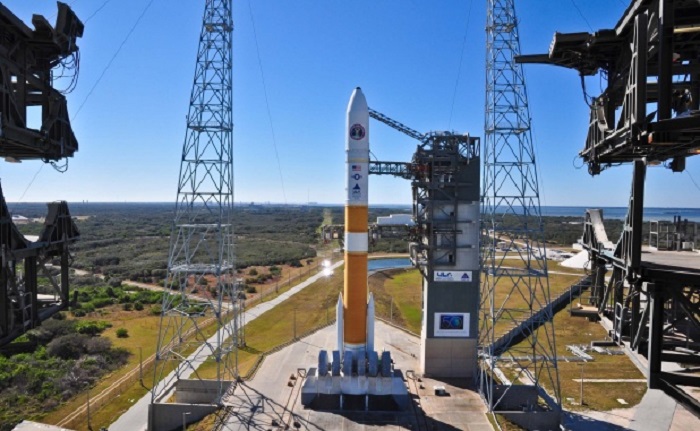.

WGS Upgrades Loom As Next Spacecraft Prepares For Launch
.
The U.S. Air Force’s sixth Wideband Global Satcom (WGS) satellite is on track for its scheduled launch on Aug. 7 following its successful mating to a United Launch Alliance Delta IV launch vehicle at Cape Canaveral on July 23.
The satellite will provide additional wideband satcom coverage for U.S. defense forces as well as those of Australia, which supported the cost of the sixth spacecraft under an interoperability agreement extending to 2029. The planned launch comes only three months after that of the delayed WGS-5, representing the closest spacing yet seen between satellite missions of this type. Preparations continue toward launch with an integrated system test to validate vehicle/payload interfaces on July 25. “We will then be loading propellant for the attitude control system under the second stage next week,” adds Jim Sponnick, United Launch Alliance vice president of Atlas and Delta programs.
Following launch, the initial control and acceptance testing of WGS-6 will be handled from the mission control center at Boeing’s El Segundo site in California. From there “we will control both WGS-5 and WGS-6 until handover to the Air Force. After launch we go into a chemical transfer phase for around two weeks,” says Boeing WGS Program Director Mark Spiwak. The burn inserts the satellite into an initial orbit for sensor, systems and solar panel deployment. “Then we go into xenon ion-powered ascent mode, which lasts from two-and-a-half to three months, to get to the test orbit. Then there is around two to four weeks of on-orbit test before handover to the Air Force before the end of the year,” he adds.
Dave Madden, Air Force Space and Missile Systems Center executive director, says WGS-5 is “on its way to GEO [Geostationary Earth orbit], while WGS-6 is the final Block 2 standard.” The pair will join the four existing WGS satellites, which all remain operational. The first spacecraft, WGS-1, was launched in October 2007 and was joined by the other Block 1 satellites, WGS-2 and -3, in 2009. The first Block 2, WGS-4, was launched in January 2012.
The next set of four satellites — WGS-7, 8, 9 and 10 — are “in production,” with WGS-7 due for launch in 2015, Madden says. Following the lead established by Australia with WGS-6, a group of five nations including Canada, Denmark, Luxemburg, the Netherlands and New Zealand will share the use of WGS-9 with the U.S. “All have immediate access to the constellation now,” Madden says.
Quelle: USAF

